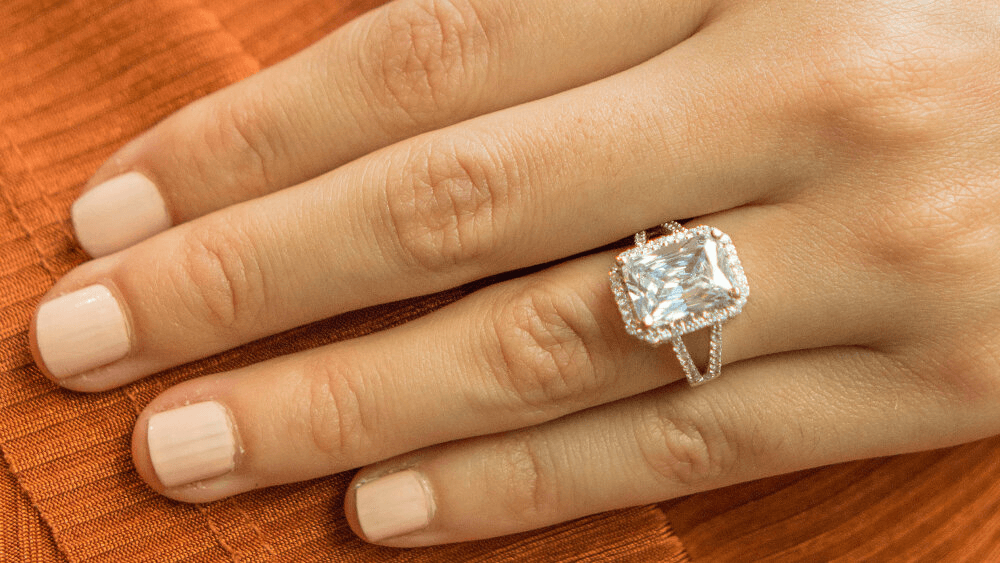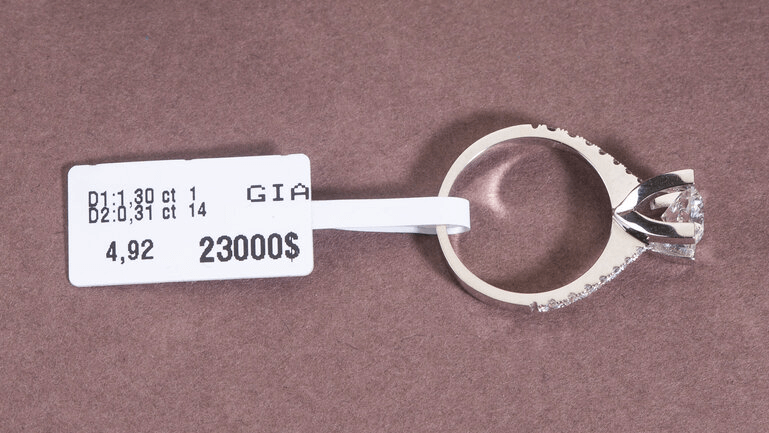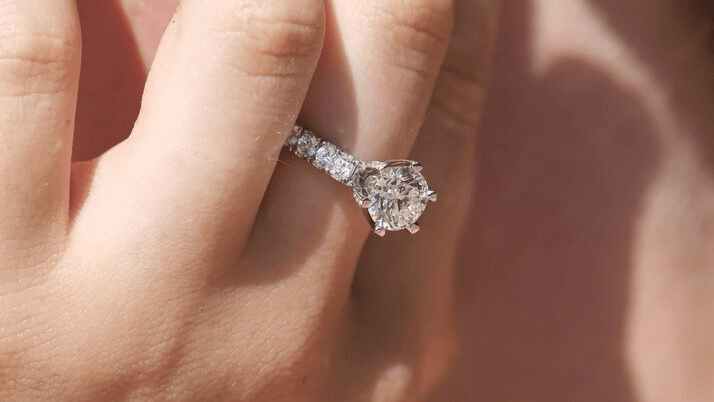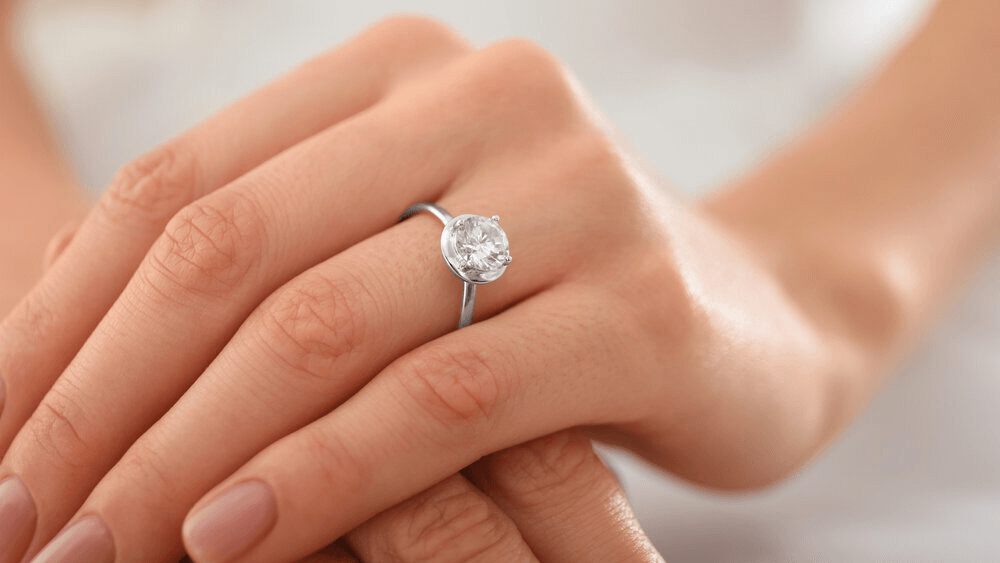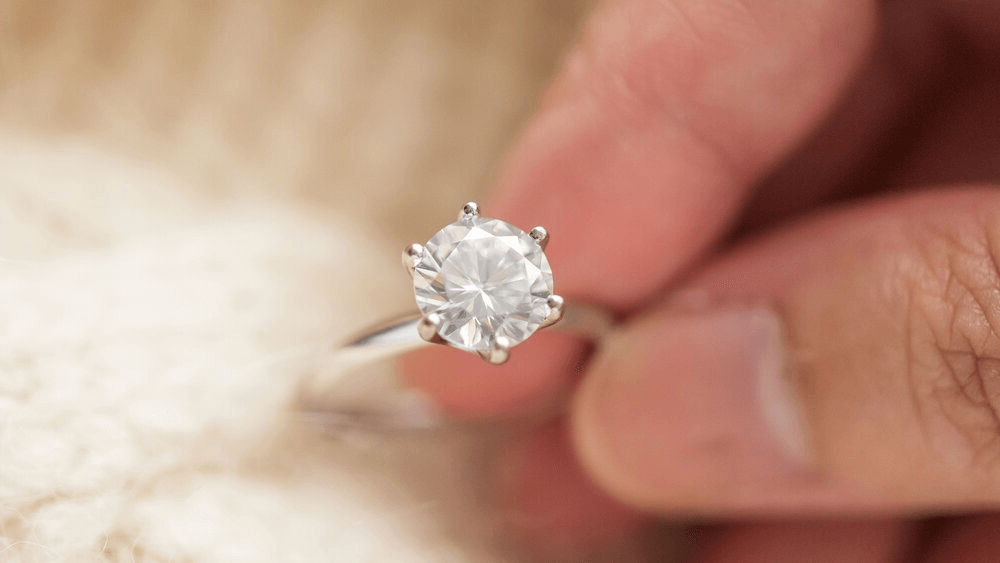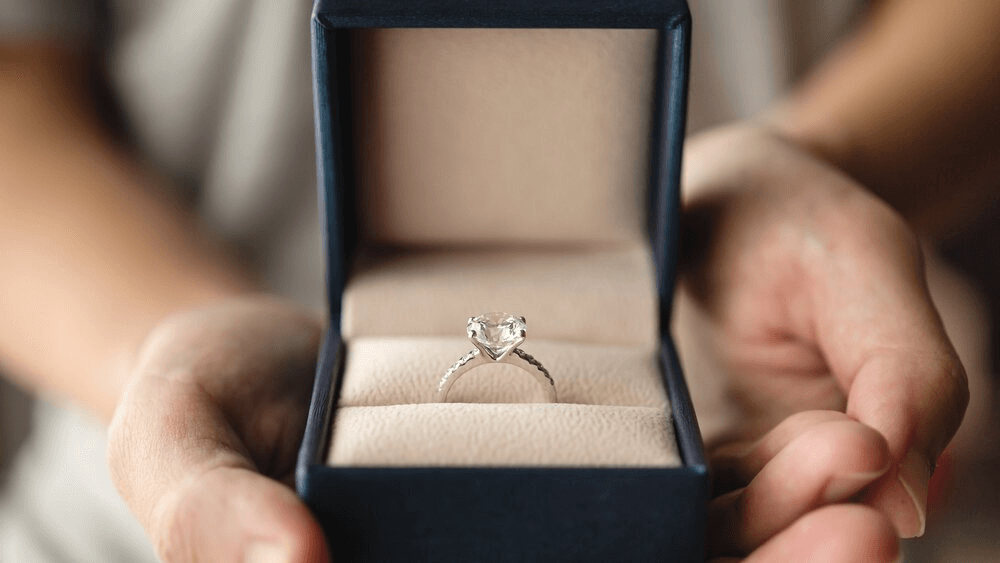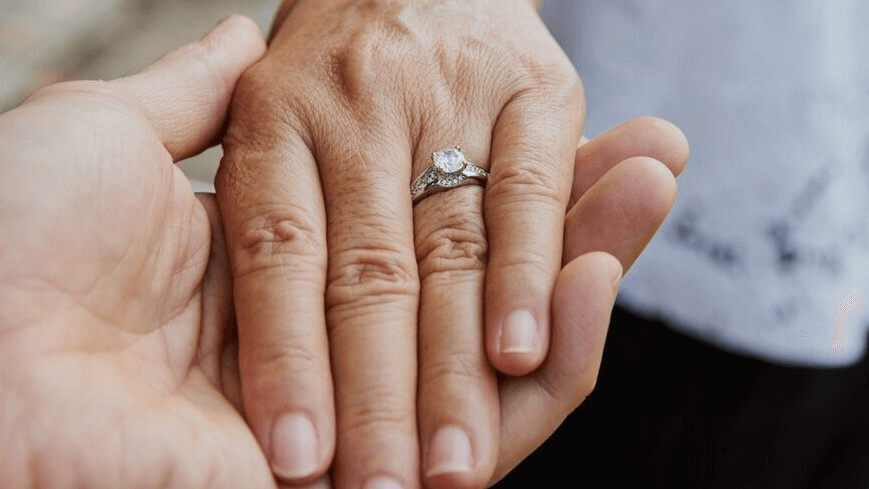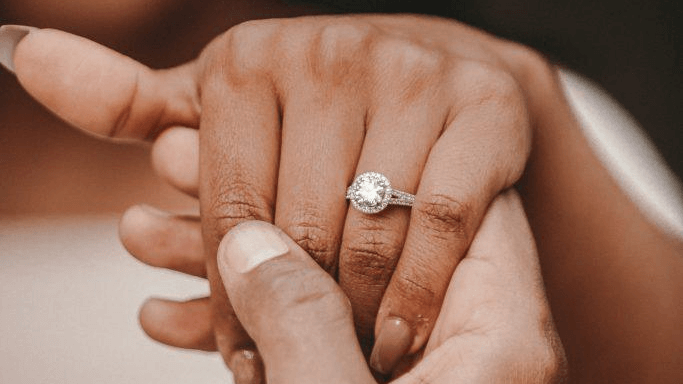Get the Diamond Glow: Stunning Engagement Rings Under $1000

By Gary A.

Edited by Olivia H.
Published Aug 13, 2024
Edited on Feb 25, 2025
Unlock the diamond glow without breaking the bank—explore our guide to stunning engagement rings under $1000, where affordable luxury meets timeless elegance.
🎧 Listen to our expert insights:

Navigate this guide:
- 7 Quick Tips for Finding an Engagement Ring Under $1,000
- Introduction to Affordable Elegance
- Understanding the Four Cs on a Budget
- Alternatives to Traditional Diamonds
- Choosing the Right Setting and Metal
- Certification and Ethical Sourcing
- Maintenance, Warranty, and Return Policies
- Engagement Ring Trends and Timeless Designs
- 10 Frequently Asked Questions About Engagement Rings Under $1000
Before we dive deeper into the specifics, here are some practical tips to help guide your decision-making process:
7 Quick Tips for Finding an Engagement Ring Under $1,000
Tip 1. The Four Cs:
- Carat: This refers to the size of the diamond. Diamonds under 1 carat can be found in this price range.
- Clarity: This refers to the number of inclusions or flaws in the diamond. For budget-friendly options, consider diamonds with slight inclusions (SI) which might not be visible to the naked eye.
- Color: Diamonds are graded from D (colorless) to Z (light yellow). Aim for G-H range for a balance of price and appearance.
- Cut: The cut affects the sparkle of the diamond. Prioritize a good cut, as this can make the diamond appear brighter.
Tip 2. Setting and Metal Type:
- Engagement rings under $1000 might not be set in platinum. Instead, you’ll often find 14k or 10k gold (white, yellow, or rose). The setting style can also influence the ring’s appearance, with some settings (like halo) making the center stone appear larger.
Tip 3. Certification:
- Ensure the diamond comes with a certificate from a recognized gemological lab (like GIA or AGS). This verifies the diamond’s quality. However, be wary of in-house certifications as they may not be as rigorous.
Tip 4. Ring Size:
- It’s crucial to get the ring size right. While resizing is often possible, certain designs can’t be adjusted without compromising their integrity. Always check the jeweler’s resizing policy.
Tip 5. Origin and Ethics:
- If possible, find out where the diamond comes from and ensure it’s conflict-free. Consider lab-grown diamonds, which are not the real thing but are much more affordable.
Tip 6. Warranty and Return Policy:
- Always check the jeweler’s return, exchange, and repair policies. A good warranty can protect you against potential defects.
Tip 7. Avoiding Common Pitfalls:
- Be wary of sales and discounts that seem too good to be true. Sometimes, stores inflate prices only to offer a “huge” discount later.
- Don’t get too fixated on just the diamond; the setting can significantly influence the overall look and value. Consider simpler designs which allocate more of the budget to the diamond itself.
Now that you’ve got these practical tips, use Jeweler AI below to find the perfect engagement ring that suits your style and budget:
Introduction to Affordable Elegance
Not everyone has the budget to splash out on a $100,000, $50,000, or even $25,000 diamond, and yet nearly everyone hopes to get engaged at some point in their lives.
For many people, the world of engagement rings feels untouchable. The more quality you want – and if you’re buying a ring for a moment like this, quality is what you want – the more you’re expected to pay. This can leave you standing in a sort of no-man’s land, where you want to buy a beautiful ring, but don’t have the budget to reach those ‘beautiful’ standards.
It’s important to note, if you’re one of the shoppers we’ve described, that beauty is not determined by a price tag. On the contrary, some of the most expensive diamonds might actually lack the beauty of more affordable rings, whether that’s with a lack of sparkle or a lack of visual impact.
The Allure of Diamonds Under $1,000
Let’s say your budget is $1,000. You would have thought this wouldn’t be nearly enough for an elegant, stunning engagement ring, especially since the average spend on engagement rings in the US sits at around $4,000 to $5,500. But what you need to remember is that engagement ring shopping is a science.
Like the rings themselves, there’s no ‘one size fits all’. Sometimes, a cheaper engagement ring might have more sparkle than a $20,000 engagement ring or a more intricate design that has been personalised for the buyer. Paying under $1,000 for an engagement ring also leaves you money in the bank, which can’t be underestimated seeing as you’ve got a wedding to plan! To buy an elegant, affordable ring, all you’ve got to do is pay even closer attention to the qualities that make a diamond ring beautiful.
Understanding the Four Cs on a Budget
To master the art of buying a beautiful but affordable engagement ring, you first need to master the art of the 4Cs. Referring to the carat, cut, color, and clarity, the 4Cs are responsible for everything from the diamond’s overall appearance to its perceived value and price. We mentioned before that some of the most expensive rings might lack something that more affordable ones have, and this all comes down to the 4Cs – for instance, a buyer might spend $75,000 on a large, 8 carat diamond ring, but it could have less brilliance than a more affordable 0.5 carat ring. Let’s take a look at why.
Carat: Size Matters, But So Does Quality
As we’ve just explained, just because you can buy an engagement ring with a large carat size, doesn’t automatically mean you’re investing in quality. In fact, spending the majority of your budget on a large carat might make any imperfections more evident, seeing as there is a larger surface area displaying them. If you’re on a budget under $1,000, you’d rather buy a smaller-carat diamond and focus the majority of your cash on the other Cs. Here’s our guide if you want to find out more about carat size.
Clarity: Finding Beauty in the Imperfections
Clarity, which refers to the presence or absence of inclusions and blemishes in a diamond, can also set your budget back a large amount. Many shoppers will spend extra on ensuring their diamond is Flawless, or at least Internally Flawless, with no inclusions and only minor blemishes visible under 10x magnification. But if you’re buying a smaller carat, you don’t have to worry as much about clarity grading. Not only is your diamond smaller, making it harder to notice imperfections, but you also have more flexibility to hide these imperfections with a clever, intricate setting. Even buying a Slightly Included diamond, where imperfections might be visible to the naked eye, can be a viable option. Our full guide is a great resource for beginners.
Color: The Hue That Speaks to You
Color might be a little more tricky to navigate, but it largely depends on the style of engagement ring you’re looking to buy. While many wouldn’t want a diamond engagement ring with a color grading of K-M (Faint Color), this can actually be a popular grading for those looking for more vintage, antique settings. The same can be said for N-R and S-Z, so it’s a case of thinking about the style of engagement ring you want and spending your budget accordingly. Click here to find out more.
Cut: Maximising the Sparkle
In our opinion, if you’re shopping with a budget of under $1,000, the cut of the diamond is the most important thing to prioritise, as it has the greatest impact on its overall brilliance. If you’re buying a small carat, a well-cut diamond can help to maximise its appearance and make it appear larger and more sparkly, even if you have chosen a lower color and clarity grade. This is where the majority of your budget should be going: expert diamond cutting that helps to bring out the fire in your diamond and ensure it really shines. Click here to find out more.
Alternatives to Traditional Diamonds
The other thing you need to think about is the kind of diamond you’re buying. A natural diamond is a diamond that is formed over millions of years deep underground, while a lab-grown diamond is formed under laboratory conditions, emulating the natural process of a diamond’s growth. While some believe that any diamond that isn’t natural isn’t worth buying, this couldn’t be further from the truth in 2024. On the contrary, more people than ever are now buying synthetic diamonds, with the industry now taking up around 6% of the overall diamond market.
The Rise of Lab Diamonds
Along with various technological advancements – including HPHT and CVD – lab diamonds have become almost indiscernible from natural diamonds, with the same grading system carried out by the GIA. Most importantly for you, they are typically far less expensive than their mined counterparts, often costing around 30% to 40% less, which can be particularly useful for your minus $1,000 budget. With consumer perception around lab-grown diamonds also evolving, we’d recommend synthetic diamonds over natural diamonds for a budget like this, helping you to cut back on costs and – once again – focus entirely on getting the 4Cs right.
Moissanite: A Gemstone’s New Best Friend
While we’re talking about diamond alternatives, we should also note the rise of moissanite, which has become a gemstone’s new best friend over the last few years. Unlike lab-grown diamonds, moissanite is composed of silicon carbide, with a hexagonal crystal lattice structure. They might be less durable than lab-grown or natural diamonds – scoring 9.25 on the Mohs scale compared to 10 – but with a higher refractive surface – around 2.69 over 2.42 – they can have far more brilliance and fire, which is important if you want your diamond to emit luxury. What’s more, moissanite is significantly less than both natural and lab-grown diamonds alike, typically costing around 10% to 20% of the price.
Choosing the Right Setting and Metal
Lastly, we should mention that a beautiful engagement ring is not just determined by the diamond that you choose. While the diamond might look different on a $100,000 ring compared to a $1,000 one, the setting is going to look the same, with the same size and dimensions, so this is a place where you can really narrow in on. Try to look for cheap metals that look luxurious, with delicate settings that enhance the beauty of the overall piece. The halo setting, for instance, can be a great place to start.
Settings that Enhance Size and Sparkle
A halo setting features a central stone that is surrounded by a ring of smaller gemstones, helping to reflect light onto the centre stone and make it appear larger and more brilliant as a result. With the smaller stones being far less expensive, this is a relatively affordable option and can be a great choice if you’re opting for a smaller carat. The illusion setting could also be one to look into. This involves metal work around the gemstone that is crafted to make the stone appear larger and is often seen as the most economical way to maximise the visual impact.
Metal Types: More Than Just a Color Choice
Silver is also going to be your friend. While many engagement ring shoppers will be looking for white gold, yellow gold, or even platinum metal, silver can is sometimes recommended as a great, affordable alternative that replicates the white lustre of these metals when polished. The trouble is, silver is nowhere near as resilient to wear and tear, so it’s best not to underspend in this category.
10 Frequently Asked Questions About Engagement Rings Under $1000
- Q: Can I really find a high-quality engagement ring for under $1000?
- A: Yes, you can find high-quality engagement rings under $1000, especially if you consider rings with diamonds just under 1 carat, explore alternative gemstones like moissanite, or opt for simpler settings.
- Q: What types of engagement rings can I expect in this price range?
- A: In this price range, you can expect to find solitaire diamond rings, moissanite engagement rings, and rings with smaller diamonds or alternative gemstones set in 14k gold or sterling silver.
- Q: Are diamonds under $1000 real?
- A: Yes, diamonds under $1000 are real but may be smaller in carat weight, have slight inclusions, or be near-colorless rather than colorless. Lab-grown diamonds also offer a budget-friendly option without compromising on the visual appeal.
- Q: What is the best metal for engagement rings under $1000?
- A: 14k gold, whether white, yellow, or rose, offers a great balance between durability and cost. Sterling silver is another affordable option, though it’s less durable and may require more maintenance.
- Q: Can I find a custom engagement ring for under $1000?
- A: While fully custom designs may be challenging within this budget, many jewelers offer semi-custom options allowing you to choose the setting and gemstone within your price range.
- Q: How important is the diamond certification for rings under $1000?
- A: Certification from a reputable lab ensures the quality of your diamond. Even for rings under $1000, a certificate from organizations like GIA or AGS can provide peace of mind about your purchase.
- Q: Are engagement rings under $1000 eligible for financing?
- A: Many jewelers offer financing options for engagement rings, including those under $1000. Check with the retailer for specific financing plans and requirements.
- Q: What should I prioritize when choosing an engagement ring under $1000?
- A: Focus on the cut quality and the overall design of the ring. A well-cut diamond or gemstone will have more brilliance and fire, making the ring look more beautiful. The setting should complement the stone and be in a style that matches the wearer’s taste.
- Q: Is it possible to upgrade an engagement ring bought for under $1000 later?
- A: Many jewelers offer upgrade programs where you can trade in your original purchase for a higher-value ring in the future. Terms and conditions vary, so it’s important to inquire about this option when buying.
- Q: How can I ensure the ring I buy for under $1000 is ethically sourced?
- A: Look for jewelers who commit to ethical sourcing practices or offer lab-grown diamonds, which are conflict-free. Certifications and retailer transparency about sourcing can also help ensure ethical practices.
Find Your Perfect Ring with Jeweler AI – Exquisite Engagement Rings Under $1000 Await!
Here are more specific budget topics to browse:
- Unlocking Luxury for Less: Navigating Engagement Rings Under $2000
- $3,000 Engagement Rings: Dazzling Elegance on a Budget!
- $4000 Diamond Ring: A Smart Buyer’s Guide to Exceptional Value
- The Smart Shoppers Guide to a $5000 Diamond Engagement Ring
- Step-by-Step Guide: How to Find a Dazzling $6000 Engagement Ring
- $7K Diamond Rings: Maximize Your Brilliance and Value!
- Avoid the Pitfalls: How to Smartly Spend $10000 on an Engagement Ring
- Expert Tips On How To Find The Ideal $12000 Engagement Ring
- Unlocking the Mystique: What Can a $15,000 Engagement Ring Truly Offer?
- Unlocking the Secrets: What Does a $20,000 Engagement Ring Truly Offer?
- $25,000 Engagement Ring Secrets: Discover the Luxury!
- $30,000 Engagement Ring: Is It Worth the Luxe Price?
- $50K Engagement Rings: See Why They’re Worth Every Penny!
FOLLOW-UP GUIDE SERIES

